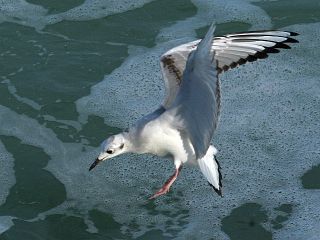 Fall migration is bringing gulls to southwestern Pennsylvania. Yesterday at Moraine State Park their numbers were up considerably compared to my last visit in late September.
Fall migration is bringing gulls to southwestern Pennsylvania. Yesterday at Moraine State Park their numbers were up considerably compared to my last visit in late September.
Though most people call them “sea” gulls, those who visit Pittsburgh breed in interior Canada and Alaska and spend the winter in similar habitat further south. Species who breed at the ocean don’t tend to come here as there’s no point in crossing the mountains. Gulls, however, are great for making exceptions to every rule – so don’t quote me.
There’s one gull who makes a radical habitat change from summer to winter, from nesting in trees in the taiga to wintering at the ocean. We don’t see many of them here but it’s my favorite gull, the Bonaparte’s gull, named for Philadelphia ornithologist Charles Lucien Bonaparte in the early 1800s.
Bonaparte’s are smaller than most gulls, have bright white primaries (the long feathers at the end of the wings) and are easy to identify by their floating, mothlike flight.
That said, gulls are notoriously difficult to identify. They go through many plumages as they mature so if you’re an expert – which I am not – you can tell the species, the time of year, and the age of the gull by looking at its feathers.
I usually can’t do that but the Bonaparte’s gull in Chuck Tague’s picture is holding still so I can tell you it’s in its first winter. That’s because he has black lines on the outer edge of his wings and a black line across his shoulder that looks like an ‘M’ when he flies. Adult Bonaparte’s have crisp all-white primaries above and below and no black shoulder line.
I would love to see more Bonaparte’s gulls – and more often – but they aren’t going to stay. They’re headed for the Atlantic. As Chuck says, “My Bonnie lies over the ocean.”
(photo by Chuck Tague)